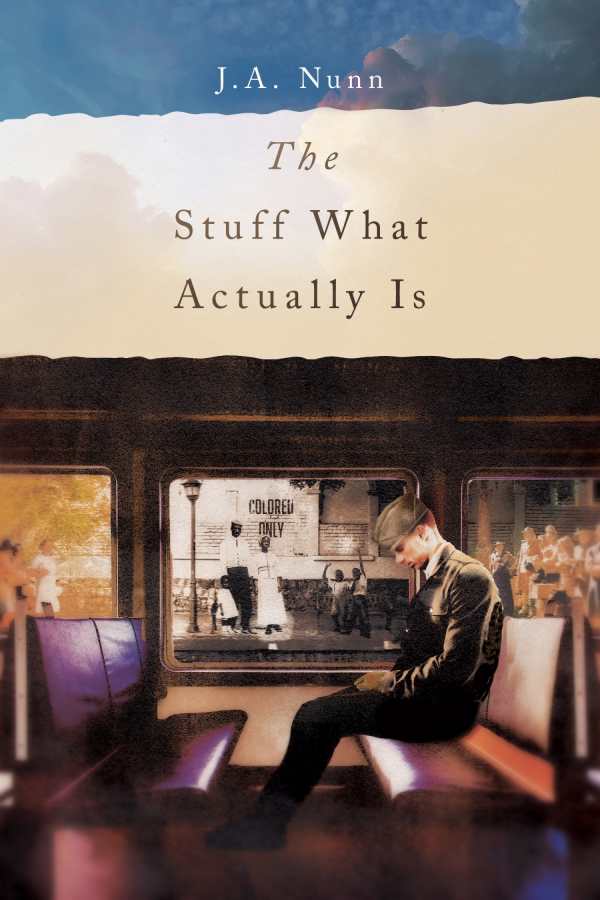
The Stuff What Actually Is
A Novel
Driven by quiet unease and its hero’s mounting discomfort with the truth about American culture, The Stuff What Actually Is is a powerful historical novel.
J. A. Nunn’s incisive historical novel The Stuff What Actually Is is about identity, assimilation, racial injustice, patriotism, and self-discovery.
In early 1940s Los Angeles, Mervyn, a British-born immigrant, aspires to be a boxer. Training at a gym under a small-time gangster and working at the Beverly Hills YMCA, he’s determined to be seen as a “real American,” even if that means fighting under the name “The Welsh Kid.” When he’s drafted into the army after Pearl Harbor, Mervyn hopes it’s his chance to prove himself. But instead of heroism and unity, he’s sent to a segregated army base in the Jim Crow South where he watches the government treat German POWs better than Black American soldiers. He begins to question the country he’s tried so hard to call his own. Through boot camp, family tension, and disillusionments, Mervyn confronts not only the violence of war but also the quieter violence of systemic injustice and the truth of a nation that does not live up to its ideals.
Mervyn’s characterization is built more upon his observations than his actions. At first, he seeks external acceptance, but those needs are eroded by the flaws he witnesses in others and in his adopted nation. He sees Japanese Americans forced from their homes, Black soldiers treated worse than prisoners, and the quiet, casual cruelties that others take for granted. His growth is not driven by grand gestures but by his mounting discomfort with the wider culture. Others reinforce those concerns: His parents, for example, reflect the divide between cultural preservation and the pressure to assimilate. All are shaped by the period and by strains that offer them few good options.
Progressing via a steady accumulation of moments that shift Mervyn’s understanding of the world, including casual comments, a train ride, and a confrontation just out of frame, the book’s scenes all contribute to a reigning sense of tension. They build toward unspoken truths, often revealing more in what is withheld than what is said. The most striking moments are the subdued ones, where silence, glances, or absence carry emotional punches.
The worldbuilding is also textured and uneasy. Each setting, from the Beverly Hills YMCA to the army base in the Jim Crow South, is rendered with care so that the spaces feel lived in and shaped by routines. Some reveal more about the characters than their words do. A constant contrast exists between how situations appear and what is happening beneath the surface. Small details, like what someone wears or how a room is arranged, hold meaning. The result is a world that mirrors Mervyn’s internal unraveling.
A revealing historical novel, The Stuff What Actually Is is about being caught between two visions of the US—the imagined and the real.
Reviewed by
Kiana Curtis
Disclosure: This article is not an endorsement, but a review. The publisher of this book provided free copies of the book and paid a small fee to have their book reviewed by a professional reviewer. Foreword Reviews and Clarion Reviews make no guarantee that the publisher will receive a positive review. Foreword Magazine, Inc. is disclosing this in accordance with the Federal Trade Commission’s 16 CFR, Part 255.
